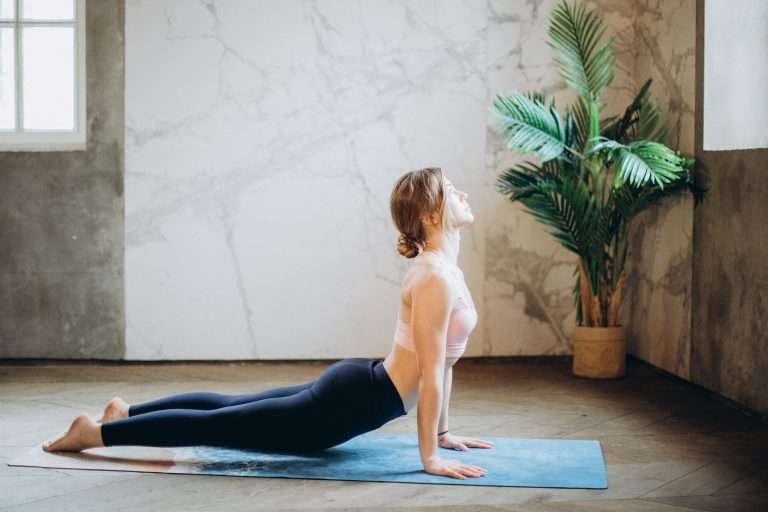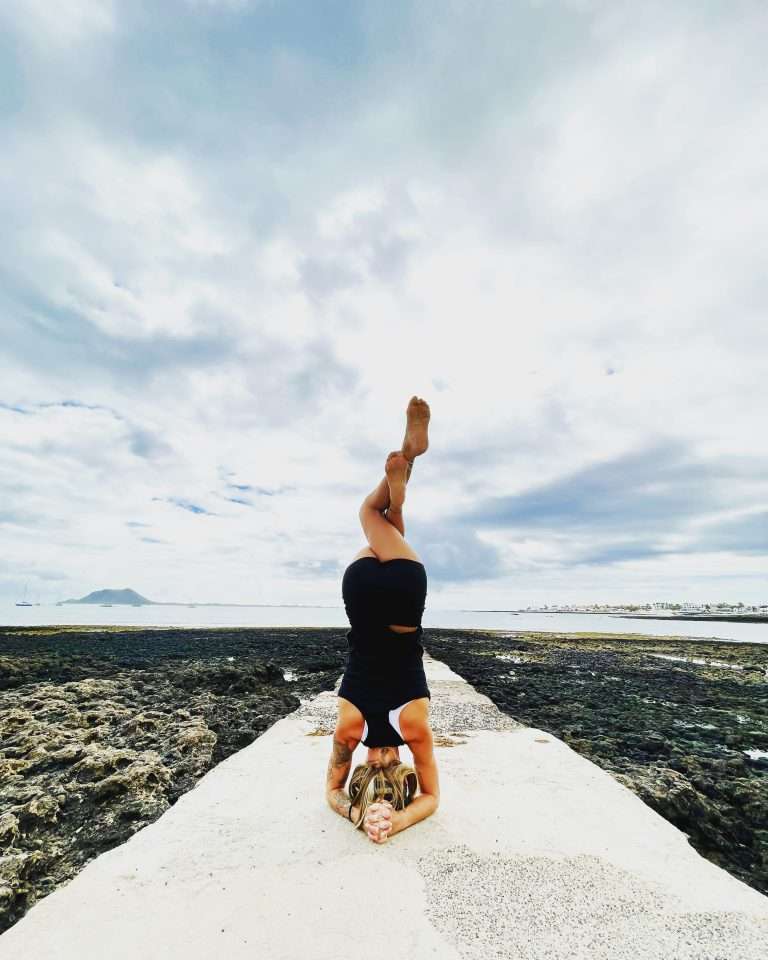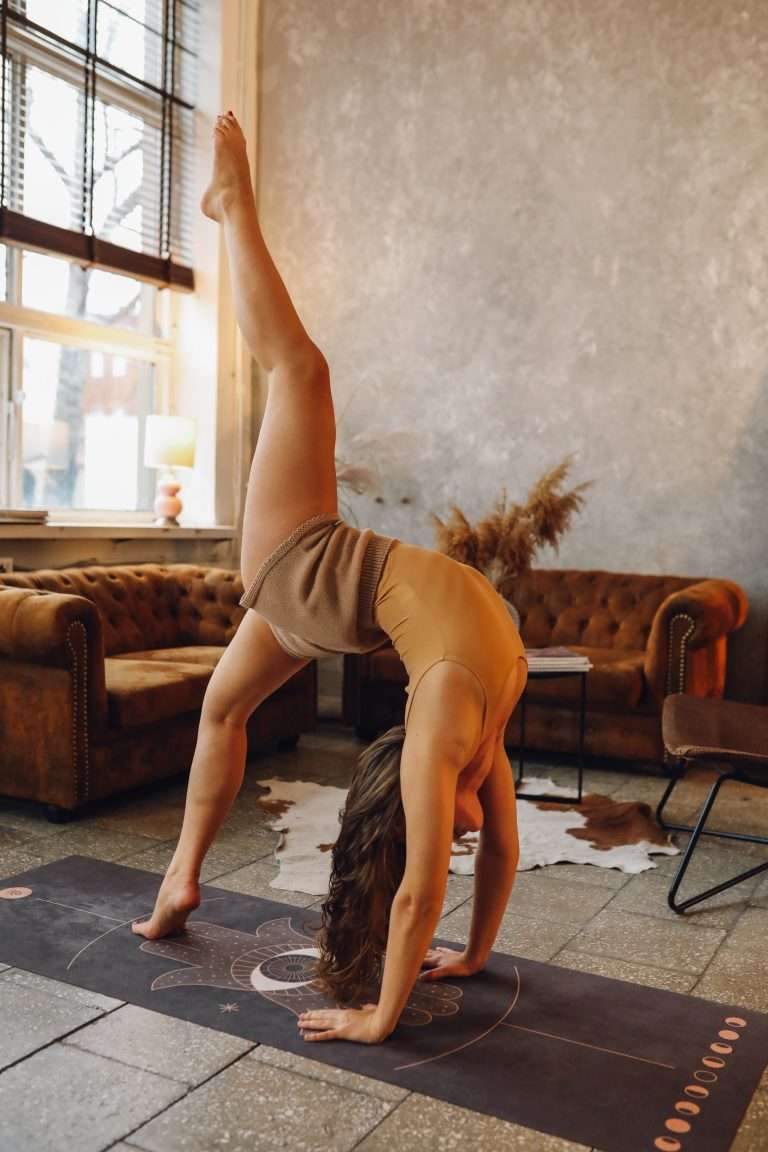7 Benefits of Inversions in Yoga
Inversions in yoga are a lot of fun – and sometimes scary, challenging, or intimidating. Remember first and foremost that inversions in yoga are part of the practice, much like any other pose. Holding a handstand or pressing into forearm stand does not make you a better yoga practitioner. When practicing inversions in yoga, we have an opportunity to remember that all poses are equal, and all poses have their own unique benefits.
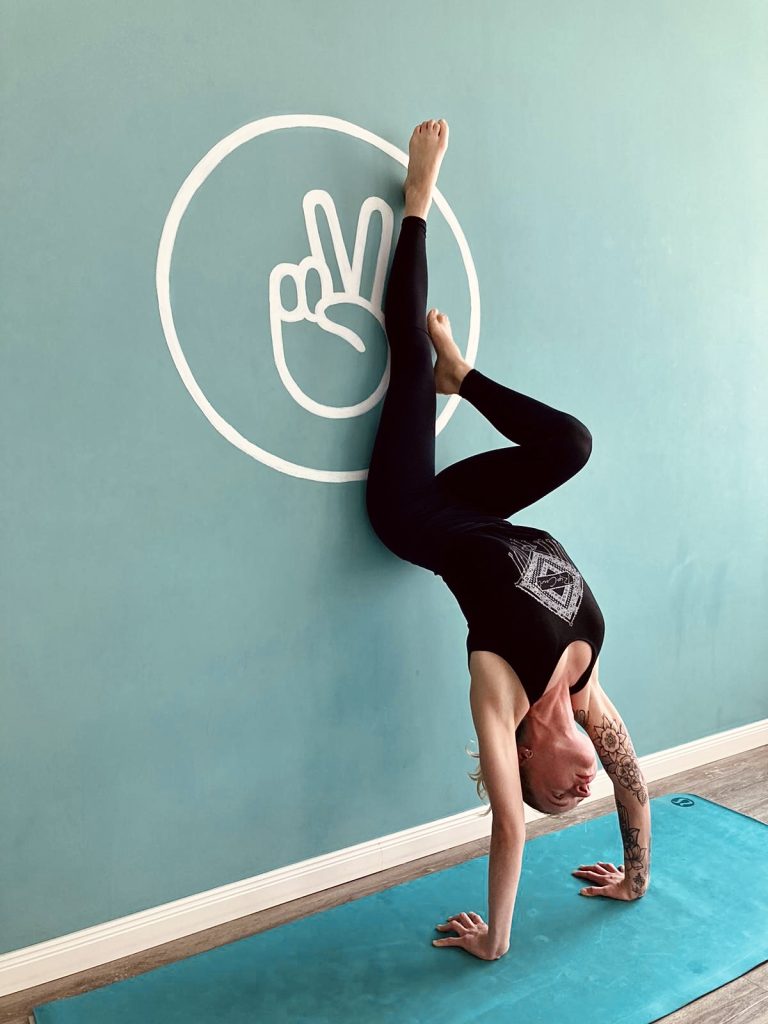
Yoga inversions are poses that bring our head below our heart. As a result, we can experience several benefits from yoga inversions, which we’ll look at below. The fact that going upside down does not come naturally to most of us is also the reason that inversions in yoga can be very challenging – on a physical and psychological level.
Therefore, when going upside down and practicing yoga inversions, I recommend that you always follow the same steps and bear in mind these factors to ensure a safe and fun yoga inversion practice for yourself.
- Let go of your ego and practice non-attachment to the yoga inversions and their supposed “perfect” forms.
- Function over form – always. The yoga inversion should feel good for you and your body. It does not have to look like that picture you saw on Instagram.
- Listen to your body daily and choose the inversion practice that feels best today. Your practice today may not be the same it was yesterday.
- Practice modifications. A downward dog is a handstand with both feet on the ground. You still receive the benefits!
- Keep breathing, no matter what. Only take your yoga inversion practice as far as that you can still breathe evenly. If you notice your breath getting stuck, take it back a notch.
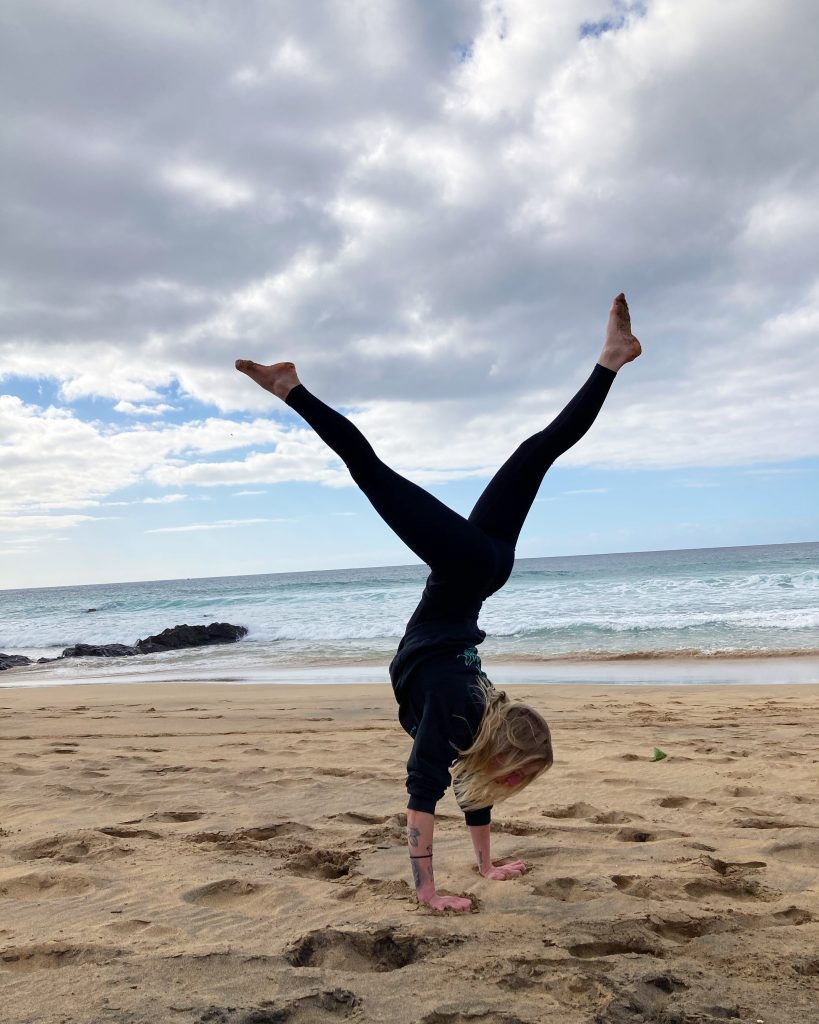
If you’re interested in more tools for you inversion practice, check out my post on 5 Tips When Learning to do a Handstand. Although this article speaks specifically of handstands, the can – and should – be applied to all inversions in yoga.
The main benefits of yoga inversions
As briefly mentioned above, yoga inversions can have physical and psychological benefits. The benefits can depend on the type of inversion you’re practicing. Active inversions, such as handstand, tripod headstand, or forearm stand can be energising, whereas softer inversions, such as viparita karani (legs up the wall) or shoulder stand have a calming, grounding effect. So, let’s take a look at the seven main benefits of inversions in yoga:
1) Improve circulation
By going upside down, we are bringing our head underneath our heart and helping the blood flow through the body, especially towards our brain. An improved blood flow means that more oxygen is transported through the body, brining nutrients to where they need to go. Did you know that this is also the reason that they say inversions make you look younger? 😉
A side note: practicing yoga inversions helps de-compress the body and spine, too. During inversions, we move against gravity, which can lighten the load on our spine, hips, and legs. This is especially beneficial if you spend long periods sitting down or standing.
2) Better immunity
Due to better blood circulation, inversions in yoga can help our lymph flow, which is responsible for removing waste from the body. The lymphatic system is also responsible for transporting white blood cells through the body that help fight invaders or infections. By doing so, our bodies can better fight infections and inflammation in the body. Therefore, a yoga inversion practice can help improve immunity by activating the lymphatic system.
3) Develop strength and flexibility
Of course, going upside down requires strength, especially in our wrists, arms, and shoulders, but also in entire core – this means abs, lower and upper back, and chest. Many preparatory inversion poses are designed to strengthen these muscles and prepare the body for going upside. Examples include:
- Plank position
- Chaturanga (or low plank)
- Downward dog
- Dolphin pose
- And many more
Aside from the strength aspect, yoga inversions require a certain flexibility or range of motion, too. Dolphin pose and it’s inverted partner, pincha mayurasana, for example, require a good range of motion in your shoulder girdle. Hamstring flexibility, on the other hand, can help with moving into headstand or handstand more easily and with more control.
4) Yoga inversions energise
As mentioned above, certain inversions in yoga are energising, because they are active, require focus, and bring our heads below our hearts. These include handstand, headstand variations, and forearm stand, or pincha mayurasana.
By increasing the blood flow to the brain and stepping outside that comfort zone in our physical body, the release of serotonin and dopamine are also triggered, helping us feel more energised and generally providing a good mood boost.
5) Yoga inversions help us relax
Just as we can use our inversion practice to energise us, we can equally use to relax and ground us. The best inversion poses for this are viparita karani, where we place the legs up the wall, traditional sirsasana, headstand, or shoulder stand, sarvangasana.
Sirsasana and sarvangasana are traditional inversion practices in the closing sequence of Ashtanga Vinyasa Yoga and The Rocket® for exactly this reason. The ground us to the Earth, teach us steadiness, and harmony. Viparita karani, legs up the wall, is a great restorative yoga pose that helps still the nervous system and activate the body’s own parasympathetic nervous system for more calmness.
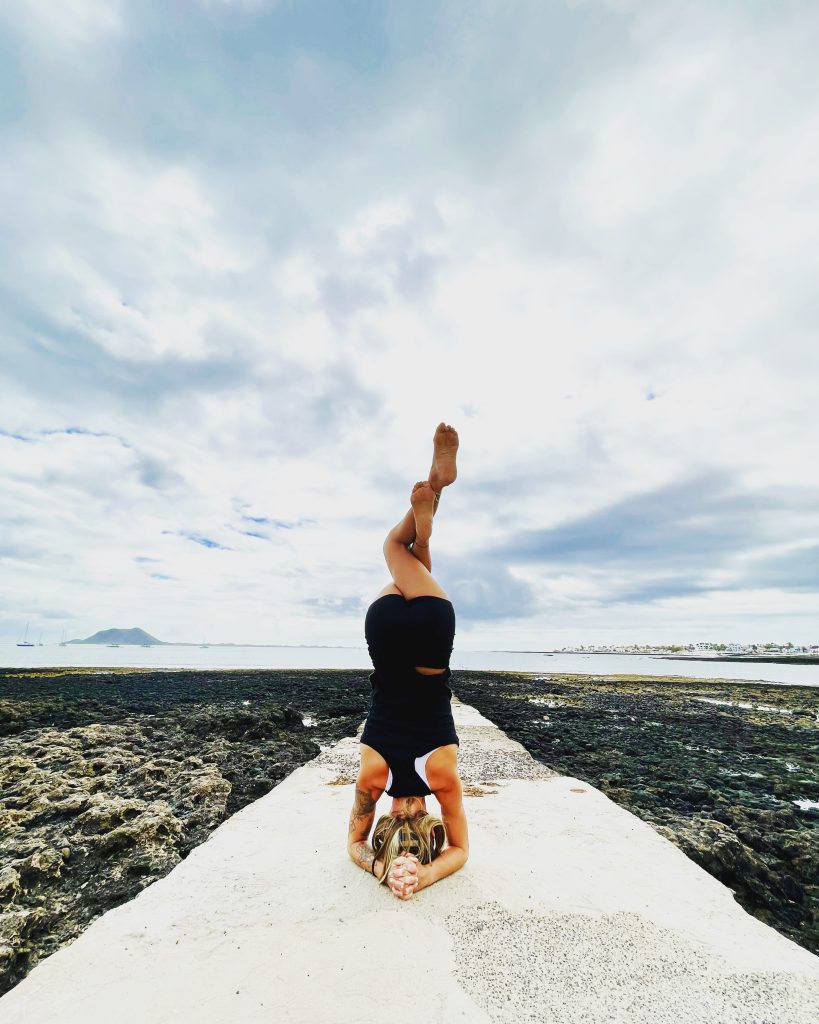
6) Build confidence with inversions
These last two benefits of yoga inversions are more psychological. It is not a secret that stepping out of our comfort zone can build confidence, when we surprise ourselves by doing something we never thought we could.
Overcoming that self-doubt and experiencing the same pose becoming easier, lighter over time is a real boost for our self-confidence. Ultimately, it is not just about holding the handstand, but the journey that led us there and what we learned about ourselves on the way.
7) Inversions teach humility
No matter how good your handstand, it makes you no better yogi than anyone else if you around parading it just because. Letting go of our ego, staying humble, and seeing our inversion practice as part of a bigger whole is just as important.
You might not hold your inversion like you did yesterday. Our bodies are constantly changing and what felt good last week, may not feel good today. Listen to your body and what it needs at any given time. Accepting, that handstands might not always be the way to go also teaches us about humility in our own practice.
A side note of caution with inversions
Please remember to practice yoga inversions with caution. You should avoid inversion practices if any of these conditions apply to you:
- High blood pressure
- Heart and circulatory conditions or strokes
- Neck injuries, especially with head- and shoulder stand
- Glaucoma
- Epilepsy
In these cases, please consult with your doctor before practicing inversions. You can still benefit from certain preparatory poses and modifications, such as:
- Balasana, child pose
- Supta baddha konasana, reclined butterfly
- Elevated legs, on a cushion or similar
- Rag doll, easy standing forward fold
Always listen to your body, as only you can know what feels good for you. This also applies to situations like menstruation of pregnancy. Practice inversions only if you feel comfortable and can breathe evenly. Remember: modifications are always an option and hold similar benefits.
If you’ve been feeling especially stressed out, maybe handstand is not the way to go right now, as your body may not need more energising. Instead, practice humility and take a restorative “legs up the wall” and just breathe.
And most importantly: remember to have fun on your journey of practicing inversions in yoga!
You got this,
Keep sparkling ✨

